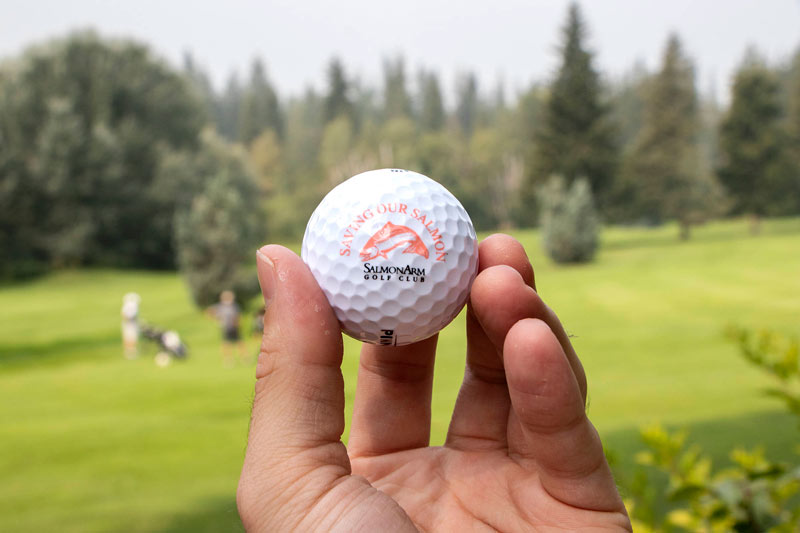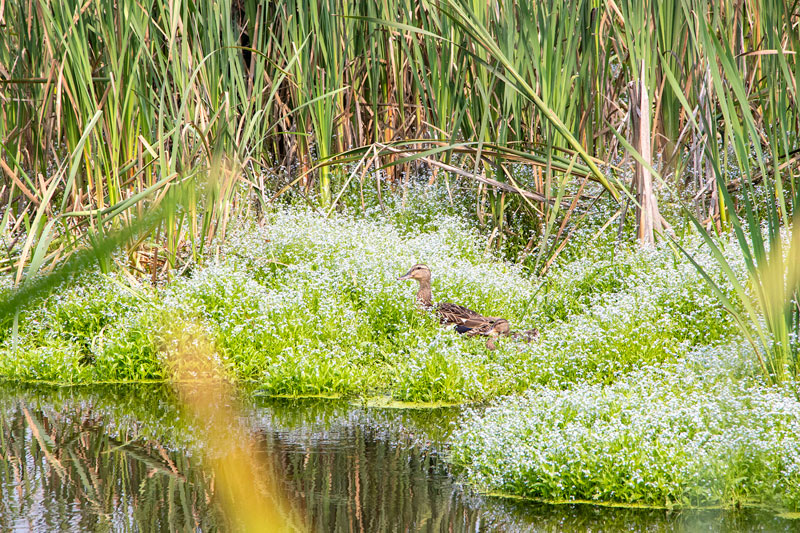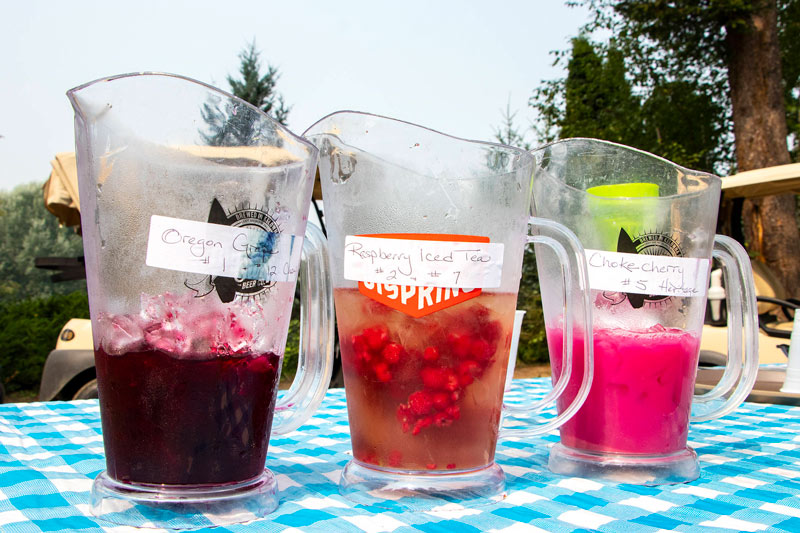
To reduce human impact on Canoe Creek, which runs through Salmon Arm Golf Club, the facility has launched a program to replace golf balls lost in the creek. Golfers can claim a free replacement ball stamped with “Saving our salmon,” which comes with a card that offers information on the club’s stewardship projects and how golfers can help. Photos by Jodi Brak/Salmon Arm Observer
While golf courses are often known for their natural beauty, they are at times criticized for infringing on the local environment and putting the needs of golfers above stewardship of the local land.
Salmon Arm (British Columbia) Golf Club, however, has flipped this equation on its head with a dedication to not only protecting the natural areas surrounding the property but to enhancing and building upon them. An Aug. 16 tour of the grounds, led by Salmon Arm Golf Club environmental technician Val Janzen, showcased some of the club’s work.
In 2014, the club attained Audubon certification, a designation based on maintenance of wildlife habitat, responsible use of chemicals, water conservation efforts, water quality management, and community outreach and education.
While balancing the needs of fragile ecosystems on one hand and golfers on the other presents challenges, Salmon Arm Golf Club continues to make strides. “Everything is not always perfect or easy to do,” says Janzen. “Sometimes concessions have to be made for golfers. After all, we are a golf course.”
Some of the club’s efforts include protecting stands of heritage trees and native plants that are important for local wildlife’s ability to move freely and to feed and raise their young. By seeding native plants around the forest’s edge, the club forms buffer zones that separate the wildlife and plant ecosystems from the heavy traffic of the golf courses (an 18-hole course and a nine-hole course).
“These buffer areas help to retain moisture and limit foot traffic,” Janzen says. “And they create these magical little pathways that help showcase the diversity of species and provide a place for birds, frogs and other animals to lay eggs or nest.”

The grounds at Salmon Arm Golf Club are home to many kinds of wildlife, from ducks and geese to coyotes, deer and the occasional bear or moose.
An important project in the works is stewardship of Canoe Creek, with Salmon Arm Golf Club looking at what can be done to manage water levels and restore the creek to its former status as a salmon tributary.
“We used to mow right up to the edge of the creek — it was like a ditch with a stream flowing through,” Janzen says. “We created a buffer around the creek, making a habitat zone. It has become a key area for wildlife to go back and forth for water, and we are planning to expand the buffer zone a few feet each year.”
The club has stopped using water from the creek altogether, and has also been monitoring water temperatures each year, noting that they have fallen more than 2 degrees since the establishment of the buffer zone. Over the past 50 years, human development and loss of vegetation have caused the creek to become too warm for salmon to spawn within its waters, making any drop in temperature a positive trend.
In addition, to minimize the impact of golfers digging through the creek to retrieve misplaced balls, the club started a program that offers to replace lost balls. As part of the program, golfers receive information about the club’s environmental efforts, why such work is important, and how golfers can help.
Another initiative the club tackled was creating a small, protected nesting area for turtles to lay their eggs in, safe from human traffic.

To illustrate the thriving ecosystem of local plants growing on club grounds, at the end of the Aug. 16 tour, fresh juices were served made from berries growing near various holes at Salmon Arm.
Although there are hurdles to making Salmon Arm Golf Club an environmentally responsible operation — such as the club bordering a large industrial zone and a busy highway, and the heavy human traffic on both of the club’s golf courses — staff members are committed to keeping up the efforts.
“Not long after I first got into the golf business almost 30 years ago, I realized that the golf course protects nature,” says Tim Kubash, Salmon Arm Golf Club superintendent and a 22-year member of GCSAA. “I came to realize the primary attraction was the forest, and our legacy is to have a forest to hand down.”